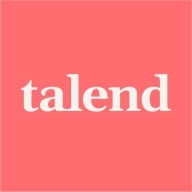

Talend Data Integration and AWS Glue are competitors in the data integration market. AWS Glue seems to have an edge due to its cloud-native architecture and automation capabilities in cloud environments, while Talend shines in flexibility and support.
Features: Talend Data Integration offers a wide range of connectors for various data sources, integrated development environment, and efficient code generation for complex orchestration. AWS Glue provides serverless operation, integration with AWS services, and a visual interface tailored for data workflows.
Room for Improvement: Talend could improve by enhancing cloud-native features, simplifying user interfaces, and better automation support. AWS Glue needs to improve documentation, handling of large data sets gracefully, and offering greater flexibility in non-AWS environments.
Ease of Deployment and Customer Service: Talend Data Integration excels with flexible deployment models, including on-premise options and comprehensive support. AWS Glue offers streamlined deployment for cloud-first strategies with AWS-native support through a serverless infrastructure.
Pricing and ROI: Talend Data Integration requires upfront investment but provides ROI through its customization prowess. AWS Glue’s consumption-based pricing is cost-effective for scalable cloud operations and offers competitive ROI for businesses using AWS ecosystems.
I advocate using Glue in such cases.
It has helped us save a lot of time by automating repetitive data processes and reducing manual interventions.
Upgrades occur every four months, and new developments coincide with version updates.
For complex Glue-related problems such as job failures or permission issues, their documentation is good, but having direct access to support helps cut down troubleshooting time significantly.
The support team is responsive when we raise issues, and they usually provide clear guidance or solutions.
It is beneficial to upgrade jobs, and we conduct extensive testing in development before migrating to production.
It can easily handle data from one terabyte to 100 terabytes or more, scaling nicely with larger datasets.
By using features like job parallelization and modular design, we can expand our data flows without having to rebuild everything.
AWS Glue is highly stable, and I would rate its stability as nine.
Once the jobs are properly designed and deployed, they run reliably without major issues.
Migrating jobs from version 3.0 to 4.0 can present compatibility issues.
With AWS, I gather data from multiple sources, clean it up, normalize it, de-duplicate it, and make it presentable.
A more user-friendly and simpler process would help speed up the deployment process.
It would be great to have more ready-to-use connectors for modern cloud and SaaS platforms.
Regarding ETL, Talend Data Integration is great, but concerning real-time data processing, people are not really sure about Talend Data Integration or might not know how it provides such types of flexibilities.
Costing depends on resource usage, and cost optimization may involve redesigning jobs for flexibility.
AWS charges based on runtime, which can be quite pricey.
The smallest cost for a project is around €700, while the largest can reach up to €7,000 based on the scale of the usage.
For ETL, I feel the performance is excellent. If I create jobs in a standard way, the performance is great, and maintenance is also seamless.
AWS Glue's most valuable features include its transformation capabilities, which provide data quality and shape for processing in ML or AI models.
AWS Glue has reduced efforts by 60%, which is the main benefit.
By automating daily data loading processes, we reduced manual effort by around three or four hours per day, which saved roughly 60 to 80 hours per month.
Flexibility is a key feature I appreciate about Talend Data Integration, especially the integration of Java within it and the ease of integrating with multiple source repositories such as GitHub and Bitbucket.
| Product | Market Share (%) |
|---|---|
| AWS Glue | 14.4% |
| Talend Data Integration | 1.5% |
| Other | 84.1% |


| Company Size | Count |
|---|---|
| Small Business | 11 |
| Midsize Enterprise | 6 |
| Large Enterprise | 32 |
| Company Size | Count |
|---|---|
| Small Business | 2 |
| Midsize Enterprise | 2 |
| Large Enterprise | 4 |
AWS Glue is a serverless cloud data integration tool that facilitates the discovery, preparation, movement, and integration of data from multiple sources for machine learning (ML), analytics, and application development. The solution includes additional productivity and data ops tooling for running jobs, implementing business workflows, and authoring.
AWS Glue allows users to connect to more than 70 diverse data sources and manage data in a centralized data catalog. The solution facilitates visual creation, running, and monitoring of extract, transform, and load (ETL) pipelines to load data into users' data lakes. This Amazon product seamlessly integrates with other native applications of the brand and allows users to search and query cataloged data using Amazon EMR, Amazon Athena, and Amazon Redshift Spectrum.
The solution also utilizes application programming interface (API) operations to transform users' data, create runtime logs, store job logic, and create notifications for monitoring job runs. The console of AWS Glue connects all of these services into a managed application, facilitating the monitoring and operational processes. The solution also performs provisioning and management of the resources required to run users' workloads in order to minimize manual work time for organizations.
AWS Glue Features
AWS Glue groups its features into four categories - discover, prepare, integrate, and transform. Within those groups are the following features:
AWS Glue Benefits
AWS Glue offers a wide range of benefits for its users. These benefits include:
Reviews from Real Users
Mustapha A., a cloud data engineer at Jems Groupe, likes AWS Glue because it is a product that is great for serverless data transformations.
Liana I., CEO at Quark Technologies SRL, describes AWS Glue as a highly scalable, reliable, and beneficial pay-as-you-go pricing model.
Talend Data Integration efficiently handles data transformation and integration with ease, supporting complex business needs. It enables seamless data management across all sources.
Talend Data Integration offers a robust platform for managing and transforming data. It connects disparate systems, enabling data flow across various environments. Users benefit from its ability to streamline processes and improve data accuracy. Its user-friendly interface and flexibility make it a preferred choice for data integration experts.
What are the key features of Talend Data Integration?In finance, Talend Data Integration enhances transaction data processing and compliance reporting. In healthcare, it ensures accurate patient data management, while in retail, it optimizes inventory and customer data analysis. Its adaptability makes it valuable across multiple sectors, addressing specific industry requirements.
We monitor all Cloud Data Integration reviews to prevent fraudulent reviews and keep review quality high. We do not post reviews by company employees or direct competitors. We validate each review for authenticity via cross-reference with LinkedIn, and personal follow-up with the reviewer when necessary.